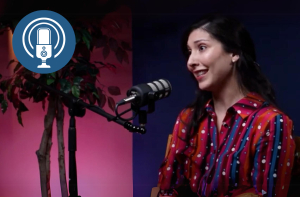Jennifer Van Gorp
Unlock Better Trauma Treatment Outcomes: Join Our Free Virtual Training on December 6th
Are you a mental health professional looking to improve client engagement and outcomes in trauma therapy? Don’t miss our upcoming event, “Treating Trauma: How to Improve Client Engagement, Retention, and Outcomes,” on Friday, December 6, 2024, from 10am-12pm MST, hosted via Zoom. This training is designed to provide therapists and clinicians with practical, evidence-based strategies to enhance their trauma treatment approaches.
Whether you’re a seasoned trauma therapist or just beginning your work in PTSD treatment, this event will offer valuable insights you can apply immediately in your practice. Register today to attend for free (without CE credit) or for just $40 if you’d like to earn 2 CEUs. Even if you can’t attend live, you’ll still receive the recording and slides after the event!
Meet the Expert Speakers: Leading Psychologists in Trauma Treatment
This event features three distinguished trauma experts, each bringing extensive experience and knowledge:
- Kara Harmon, Ph.D. is a licensed psychologist in both Colorado and Utah, serving as the Program Manager for the PTSD Clinical Team at Veteran Affairs and founder of the Center for Post-Traumatic Growth. Dr. Harmon has led the VA Prolonged Exposure Rollout Initiative and serves as the lead supervisor for the PTSD Rotation in the APA-accredited Pre-Doctoral Internship Program. She developed an evidence-based methodology for improving client engagement and retention, which she will share during the event.
- Alex Ertl, Psy.D. is the Program Director for the Trauma, Stress, and Resilience Program at UCEBT and a licensed psychologist in both Colorado and Utah. Dr. Ertl specializes in treating trauma using EMDR and other modalities in outpatient settings. His deep understanding of trauma therapies will provide real-world applications to improve treatment outcomes.
- Carl Sallee, Psy.D. is a licensed psychologist in Utah, with specialized training in trauma therapy under the guidance of Dr. Harmon. He incorporates a trauma-informed lens in all his psychotherapy work, using modalities such as Cognitive Processing Therapy (CPT), Prolonged Exposure (PE), and Acceptance and Commitment Therapy (ACT).
What You Will Learn in This Trauma Therapy Training
This interactive training is designed to provide you with actionable strategies to improve client motivation, retention, and outcomes. Here’s what you will learn:
- Understanding trauma's impact on brain and body: Learn how trauma affects both the brain and body by recognizing the neurobiology of PTSD and trauma-related responses.
- Building trust with clients: Discover how to humanize and validate client distress, creating a stronger therapeutic alliance and enhancing trust in the process.
- Enhancing client buy-in: Develop an approach to evidence-based treatments (EBT) that empowers clients through shared decision-making, helping them understand the rationale behind their care and stay engaged.
- Using values to keep clients motivated: Learn how to use client values to counteract emotional activation, keeping them focused and motivated throughout treatment.
Why Attend This Event?
- Proven Techniques from Experts: Learn from seasoned psychologists who specialize in trauma treatment and have a track record of improving client outcomes in clinical settings.
- Real-World Applications: Gain practical insights that you can immediately apply to your therapy sessions to boost client engagement, retention, and overall treatment effectiveness.
- Flexible Options: Whether you want to attend live or catch up later, you’ll receive the recording and slides as long as you register!
- Earn CEUs: Choose the option to earn 2 Continuing Education Units (CEUs) for just $40, or attend for free if CEUs aren’t needed.
Who Should Attend?
This event is ideal for psychologists, therapists, counselors, and other mental health professionals who work with trauma survivors. Whether you’re using Cognitive Behavioral Therapy (CBT), EMDR, Prolonged Exposure, or other trauma-focused treatments, you’ll find valuable takeaways to enhance your practice.
Event Details at a Glance:
- Event Title: Treating Trauma: How to Improve Client Engagement, Retention, and Outcomes
- Date: Friday, December 6, 2024
- Time: 10am – 12pm MST
- Location: Virtual via Zoom
- Cost: Free to attend without CE credit, or $40 for 2 CEUs
- Speakers: Kara Harmon, Ph.D., Alex Ertl, Psy.D., and Carl Sallee, Psy.D.
Recording and slides are emailed to all registrants, even if you can’t attend live!
Register Now to Secure Your Spot!
Don't miss this opportunity to learn from the experts in trauma therapy. Register today and receive valuable insights, practical strategies, and continuing education credits (if needed). Remember, even if you can't attend live, you'll receive access to the recording and slides after the event.
Register now and take your trauma treatment skills to the next level!
EMDR Intensives
Transform Your Healing Journey with EMDR Intensives
We understand that healing is a deeply personal journey, and sometimes traditional therapy sessions may not be enough to address the complexities of your experiences. That’s why we offer EMDR (Eye Movement Desensitization and Reprocessing) Intensives—tailored therapeutic sessions designed to facilitate profound healing in a compressed time frame.
What is EMDR?
EMDR is an evidence-based therapeutic approach that helps individuals process and heal from trauma, anxiety, and a variety of emotional distress. By using bilateral stimulation (such as guided eye movements), EMDR aids in reprocessing distressing memories, allowing you to experience relief and a renewed sense of peace. Our EMDR Intensives provide an immersive experience that can lead to significant breakthroughs in a shorter time period.
What is an EMDR Intensive?
An EMDR intensive treatment is a condensed version of EMDR weekly therapy. Often with EMDR, clients meet weekly for hour-long sessions with their therapists over a period of months. In an intensive format, clients meet with their therapist for multiple hours in a row during a brief period of time. For example, instead of meeting for 12 hours over the course of 12 weeks, a client may engage in an EMDR intensive for 6 hours for two days in a row. There are multiple benefits to choosing this format over weekly therapy but overall, it helps people find relief faster.
Why Choose EMDR Intensives?
- Focused Healing: Our intensives allow for concentrated work on your specific challenges, enabling you to dive deeper into your healing process. Because EMDR intensives take places over days instead of weeks, there is less need to use therapy time to address weekly challenges and barriers that interfere with being able to stay focused on therapy goals.
- Flexible Scheduling: We offer various intensive formats to accommodate your needs, whether it’s a full day or a series of shorter sessions. For many, it may be difficult to find the time every week to attend therapy. Intensives are a good fit for those who can more easily find a few days to commit to treatment, rather than a weekly routine over a long period of time.
- Experienced Guidance: With specialized experience in trauma-informed therapy, Dr. Ertl and Dr. Taylor are dedicated to creating a safe and supportive environment for your healing journey.
What to Expect
During your EMDR Intensive, you can expect a warm, compassionate space where you can explore your feelings and experiences. Each session is tailored to your individual needs, and we will work closely together to set goals and create a personalized plan for your healing.
Research Supporting EMDR Intensives
Auren, T. J. B., Klæth, J. R., Jensen, A. G., & Solem, S. (2022). Intensive outpatient treatment for PTSD: an open trial combining prolonged exposure therapy, EMDR, and physical activity. European Journal of Psychotraumatology, 13(2). https://doi.org/10.1080/20008066.2022.2128048
- Improving PTSD symptoms. This study demonstrated that the intensive therapy format significantly improved PTSD symptoms, with 55-62% of participants achieving clinically significant changes at post-treatment and three-month follow-up. The intensive format effectively addressed severe PTSD symptoms, with 52-62% of patients losing their PTSD diagnosis at follow-up.
- Reduce depression and anxiety. Patients also reported reductions in depression and anxiety, alongside improved well-being and interpersonal functioning. The effect sizes were notably large, comparable to previous inpatient programs and other intensives treatments.
- High satisfaction. Participants expressed high satisfaction with the treatment, with no dropouts and excellent attendance rates.
- Viable alternative to traditional treatments. Overall, the findings support the feasibility and effectiveness of intensive trauma-focused therapy in outpatient settings, highlighting its potential as a viable alternative to traditional spaced treatments for patients with complex PTSD. (https://www.ncbi.nlm.nih.gov/pmc/articles/PMC9553174/)
Bongaerts, H., Van Minnen, A., & de Jongh, A. (2017). Intensive EMDR to Treat Patients With Complex Posttraumatic Stress Disorder: A Case Series. Journal of EMDR Practice and Research, 11(2), 84–95. https://doi.org/10.1891/1933-3196.11.2.84
- Safe and feasible for severe and complex PTSD. This study investigated the safety, feasibility, and acceptability of intensive application of EMDR therapy in patients with severe PTSD, without prior stabilization. The findings indicated that this intensive approach is safe, as no adverse events were reported, and there were no dropouts during treatment.
- Significant reduction in PTSD symptoms. Additionally, patients experienced a significant reduction in PTSD symptoms, with improvements maintained at follow-up. Overall, the study supports the notion that intensive application EMDR can be an effective treatment option for individuals with severe PTSD, particularly in complex cases. (https://connect.springerpub.com/content/sgremdr/11/2/84)
Van Woudenberg, C., Voorendonk, E. M., Bongaerts, H., Zoet, H. A., Verhagen, M., Lee, C. W., van Minnen, A., & De Jongh, A. (2018). Effectiveness of an intensive treatment programme combining prolonged exposure and eye movement desensitization and reprocessing for severe post-traumatic stress disorder. European Journal of Psychotraumatology, 9(1). https://doi.org/10.1080/20008198.2018.1487225
- Effective with PTSD and comorbidies. This study explored the effectiveness of an intensive treatment program of EMDR therapy for patients suffering from several PTSD and multiple comorbidities. Results show a high response rate: over 80% of patients experienced a clinically meaningful response to treatment, and more than 50% no longer met the criteria for PTSD following the intensive program.
- Very low dropout rate. A major benefit of the intensive format is patient retention: the dropout rate was less than 3%, significantly lower than the average 22.2% seen in traditional weekly treatments. Overall, the intensive format is safe and effective and shown to significantly decreased the severity of PTSD symptoms. (https://www.ncbi.nlm.nih.gov/pmc/articles/PMC6041781/)
Preparing for Your Intensive
To maximize the benefits of your Intensive, consider the following preparation tips:
- Set Clear Goals: Reflect on what you hope to achieve during the intensive. Having specific goals can help guide the sessions and focus your efforts.
- Create a Comfortable Environment: Ensure that you have a safe and comfortable space for your sessions. This can help you feel more at ease and open during the process.
- Practice Self-Care: Engage in self-care activities leading up to your intensive. This might include mindfulness practices, journaling, or spending time in nature to help ground yourself.
- Be Open and Honest: Approach the sessions with an open mind and a willingness to explore your feelings and experiences. Honesty with yourself and your therapist will enhance the effectiveness of the therapy.
Who is a Good Fit for an Intensive?
Intensives are ideal for individuals who are ready to engage deeply in their healing process. Those with prior therapy experience, specific trauma-related goals, and a strong motivation for change often find this format particularly beneficial. Additionally, individuals who can dedicate time to an intensive format will likely experience the most significant outcomes.
What to Expect in Terms of Outcomes and Results
Participants in Intensives can expect enhanced emotional clarity, reduced distress, new coping strategies, and a sense of empowerment. Many leave the intensive feeling hopeful and equipped to navigate their emotional landscape more effectively. Follow-up support is encouraged to help integrate the experiences and maintain progress.
Your Healing Journey Awaits
If you feel ready to embark on this transformative journey, we invite you to reach out. Together, we can explore how an Intensives can support your unique path to healing and growth.
What's the difference between the ADOS-2 and the MIGDAS-2?
Diagnosing autism spectrum disorder (ASD) can be complex, and professionals use various tools to help with this process. Two widely used assessments are the Autism Diagnostic Observation Schedule, Second Edition (ADOS-2) and the Monteiro Interview Guidelines for Diagnosing the Autism Spectrum, Second Edition (MIGDAS-2). While both tools aim to identify autism, they do so in different ways. Let's explore their similarities, differences, and when each might be used.
Similarities
Both the ADOS-2 and MIGDAS-2 are designed to diagnose autism spectrum disorder. They share some common features:
- Purpose: Both tools help professionals diagnose ASD in individuals of different ages and developmental levels.
- Components: Each assessment involves observing behaviors and gathering information through interviews.
- Age Range: Both assessments can be used with children, adolescents, and adults.
- Multidisciplinary Use: These tools are suitable for use by various professionals, including psychologists, speech-language pathologists, occupational therapists, and educators.
Differences
Despite their similarities, the ADOS-2 and MIGDAS-2 differ in several key areas:
1. Assessment Approach:
- ADOS-2: The ADOS-2 uses a series of structured and semi-structured tasks to observe behaviors. It includes five modules tailored to different language and developmental levels. The focus is on direct interaction with the individual to observe social, communicative, and play behaviors.
- MIGDAS-2: The MIGDAS-2 relies more on qualitative data obtained through structured interviews with the individual, parents, and teachers. It emphasizes sensory experiences, social interactions, communication patterns, and special interests. Observations are made in natural settings like home, school, or clinic.
2. Data Collection:
- ADOS-2: Data is collected through direct assessment tasks, providing a structured way to observe behaviors.
- MIGDAS-2: Data is gathered through interviews and observations, offering a more narrative and descriptive understanding of the individual's experiences.
3. Administration:
- ADOS-2: The ADOS-2 involves direct interaction between the clinician and the individual being assessed. The tasks are designed to elicit specific behaviors related to ASD.
- MIGDAS-2: The MIGDAS-2 includes structured interviews and contextual observations, requiring the clinician to interpret qualitative information from multiple sources.
4. Flexibility:
- ADOS-2: The ADOS-2 is a standardized assessment, meaning it follows a specific set of procedures and tasks for consistency.
- MIGDAS-2: The MIGDAS-2 is more flexible, allowing clinicians to adapt the interview and observation process based on the individual's unique context and needs.
Pros and Cons of the MIGDAS-2
Pros:
- Better for Adults: The MIGDAS-2 is often more suitable for adults, particularly those who are high-functioning.
- Telehealth Friendly: Its qualitative nature makes it easier to administer via telehealth.
- Neurodivergent-Affirming: The approach is more affirming of neurodivergent experiences, focusing on strengths and differences rather than just deficits.
- Collaborative with Family: The process can be done collaboratively with family members, incorporating their insights and perspectives.
- Broad Focus: Addresses areas beyond social skills, such as sensory processing, co-occurring health issues, and independent living skills.
- Flexibility: More adaptable to the individual's needs and context, providing a richer, more personalized assessment.
Cons:
- No Quantitative Scoring: Lacks the quantitative scoring and norms that many standardized assessments provide.
- Less Quantitative: Scoring is more qualitative, which can be seen as less objective.
- Insurance and Schools: Many insurance companies and educational institutions still require the use of the ADOS-2 for official diagnoses, particularly for children.
When to Use Each Tool
Choosing between the ADOS-2 and MIGDAS-2 depends on various factors, including the individual's characteristics and the context of the assessment.
When to use ADOS-2:
- Need for Standardization: If a standardized, structured assessment is required, the ADOS-2 is a good choice. It provides clear tasks and scoring criteria, which can be helpful for insurance purposes or when a consistent approach is needed.
- Direct Observation: If direct interaction and observation of specific behaviors are crucial, the ADOS-2's structured tasks can effectively highlight behaviors associated with ASD.
When to use MIGDAS-2:
- Contextual Understanding: If a deeper, more personalized understanding of the individual's experiences is needed, the MIGDAS-2's qualitative approach can provide rich, detailed information. It is particularly useful for individuals with complex presentations or when standardized tests might not fully capture their behaviors.
- Multiple Perspectives: The MIGDAS-2 gathers information from various sources, including parents, teachers, and the individual. This multi-perspective approach can be beneficial in understanding how the individual behaves in different settings and contexts.
- Telehealth: The MIGDAS-2 is more adaptable to remote assessments, making it a better choice for telehealth settings.
Conclusion
Both the ADOS-2 and MIGDAS-2 are valuable tools for diagnosing autism spectrum disorder, but they serve different purposes and are used in different ways. The ADOS-2 is a structured, standardized assessment focusing on direct observation, making it suitable for situations requiring consistency and specific task-based evaluations. On the other hand, the MIGDAS-2 offers a flexible, qualitative approach that provides a comprehensive understanding of the individual's experiences through interviews and contextual observations.
Professionals must choose the right tool based on the individual's needs and the assessment context. By understanding the strengths and differences of each tool, clinicians can make informed decisions that lead to accurate diagnoses and effective interventions.
To get started with a autism testing at UCEBT, fill out this online form for a free 15-minute consultation.
The Power of Pleasure: Unlocking Healing Through Pleasure-Driven Lives
In a world where stress and trauma often take center stage in therapy, the idea of pleasure as a therapeutic focus might seem like a luxury—or even an afterthought. Yet, the power of pleasure in healing is profound, offering a gateway to deeper well-being and connection, both physically and emotionally. The upcoming virtual event, "The Power of Pleasure: Exploring the Healing Potential of Pleasure-Driven Lives," is a unique opportunity for mental health professionals to explore this often overlooked aspect of therapy. Mark your calendars for Friday, October 4, 2024, from 10:00 a.m. to 12:00 p.m. MST, and prepare to dive into a transformative discussion that will earn you 2.0 Continuing Education (CE) credits.
Why Focus on Pleasure in Therapy?
Pleasure is more than just a fleeting feeling of joy; it is a fundamental aspect of a high-quality life. Integrating pleasure into therapeutic practices can help clients address deep-seated issues, particularly those related to sexuality and intimate relationships. This workshop offers a straightforward, comprehensive model of care that emphasizes pleasure as a key metric of well-being. Whether you're working with individuals or couples, this pleasure-centered approach can enhance your ability to address sexual concerns, even if you don't have specialized training in sex therapy.
Exploring the Mind-Body Connection
One of the workshop's highlights is its exploration of pelvic floor therapy—a specialized form of therapy that addresses conditions like pelvic pain, pain during sex, and postpartum healing. Understanding the physical barriers to pleasure is crucial for mental health therapists, who can then confidently refer clients to pelvic floor therapists for targeted care. By integrating these physical aspects into your therapeutic approach, you can provide a more holistic path to healing for your clients.
What You'll Learn
By attending "The Power of Pleasure," you will:
- Implement a pleasure-model of care: Learn practical ways to integrate pleasure into your therapeutic work, addressing both psychological and physical barriers.
- Understand pelvic floor therapy: Gain a broad understanding of the conditions treated by pelvic floor therapy and the modalities used, helping you know when to refer a client for specialized care.
- Enhance client well-being: Equip yourself with the tools to help clients lead more pleasure-driven lives, improving their overall quality of life and deepening your therapeutic impact.
Flexible Learning for Busy Professionals
Can't make it to the live event? No problem. UCEBT offers a home-study option, allowing you to earn CE credits on your own schedule. Simply register for the free, non-CE version of the event, and sign up for the mailing list. Within two weeks of the live session, you'll receive instructions on how to purchase the home-study version for just $30. As always, all registrants will receive a recording of the event and the presentation slides, so you can revisit the material whenever you need.
Meet the Presenters
Dr. Stephanie Taylor, Ph.D., and Heather Hill, MS, OTR/L, bring a wealth of knowledge and experience to this workshop. Dr. Taylor specializes in the comprehensive treatment of trauma and its impact on sexuality, with a focus on post-traumatic growth. Her holistic approach integrates somatic therapies to foster healing at both the mind and body levels.
Heather Hill, an experienced occupational therapist and yoga instructor, has a strong focus on pelvic floor therapy and pelvic health. Her background in human movement science and her holistic approach emphasize the interconnectedness of body, mind, and breath, making her a perfect guide for exploring the physical aspects of pleasure.
Join Us
Don't miss this opportunity to enrich your practice with a new perspective on pleasure and healing. "The Power of Pleasure: Exploring the Healing Potential of Pleasure-Driven Lives" promises to be an enlightening and empowering experience that will enhance your ability to support your clients in leading more fulfilling, pleasure-driven lives.
Register today and take the first step towards integrating the power of pleasure into your therapeutic practice. For more information or to sign up, visit UCEBT's events page or contact Jennifer at or (801) 419-0139. We look forward to seeing you there!
Embracing Neurodiversity: Strengths-Based Approaches for Autism in Clinical Practice
As our understanding of autism continues to evolve, so too must our approaches to supporting autistic individuals in clinical settings. The upcoming virtual event, "Embracing Neurodiversity: Strengths-Based Approaches for Autism in Clinical Practice," is designed to equip mental health professionals with the knowledge and tools to do just that. Scheduled for Friday, September 6, 2024, from 9:00 a.m. to 1:00 p.m. MST, this workshop offers 4.0 Continuing Education (CE) credits, including an ethics component, for psychologists and other mental health professionals.
Why Attend This Workshop?
The concept of neurodiversity, which recognizes the inherent differences in how human minds perceive and interact with the world, has gained significant traction since its inception in the 1990s. This framework challenges the traditional medical model of autism that often pathologizes autistic behaviors and instead promotes an understanding that values diverse cognitive styles. However, integrating neurodiversity into clinical practice requires more than just a shift in perspective; it calls for concrete skills and strategies that mental health professionals can apply to better serve their autistic clients.
This workshop, led by Dr. Laura Rowley, Ph.D., a licensed clinical psychologist and Program Director for the Assessment and Testing Team at the Utah Center for Evidence Based Treatment (UCEBT), will provide attendees with these essential tools. Dr. Rowley brings a wealth of experience in assessing and treating autistic children and adults, and her expertise will guide participants through the principles of neurodiversity-affirming practice.
What You'll Learn
By attending this workshop, participants will:
- Understand how neurodiversity-affirming principles align with professional ethics: Learn to balance ethical considerations with the need to support autistic clients in a way that respects their unique neurocognitive profiles.
- Conceptualize cases from a neurodiversity paradigm: Shift your perspective to view autism through a strengths-based lens, enhancing your ability to tailor interventions to individual client needs.
- Enhance therapeutic relationships: Discover at least three strategies for building stronger connections with autistic clients, grounded in neurodiversity-affirming principles.
- Incorporate practical skills into evidence-based treatments: Learn how to adapt popular therapeutic approaches to better support autistic clients, ensuring your interventions are both effective and respectful of their neurodiversity.
Flexible Learning Options
For those unable to attend the live session, UCEBT offers a home-study option. Simply register for the free, non-CE version of the event, and sign up for the mailing list. Within two weeks of the live event, you'll receive information on how to purchase the home-study version for $60, allowing you to earn CE credits at your own pace.
Additionally, all registered participants will receive a recording of the event and the presentation slides, making it easier to revisit the material and apply what you've learned in your practice.
A Commitment to Ethical Practice
This workshop is more than just an opportunity to earn CE credits—it's a commitment to ethical, inclusive, and effective practice. As mental health professionals, it's our responsibility to continuously update our understanding and approaches, ensuring that all clients, including those who are autistic, receive the highest standard of care.
Join Us
Don't miss this chance to deepen your understanding of neurodiversity and enhance your clinical practice. Register today for "Embracing Neurodiversity: Strengths-Based Approaches for Autism in Clinical Practice" and take a significant step towards becoming a more inclusive and effective clinician.
For more information or to register, visit UCEBT's events page or contact Jennifer at or (801) 419-0139. We look forward to seeing you there!
Hannah Frazier, B.S.
Emma Foster, B.A.
In today's fast-paced world, managing stress and preventing burnout has become crucial. To shed light on this topic, the Utah Hispanic Chamber of Commerce recently hosted our own Dr. Cristina Chévere-Rivera on their podcast, "Hablemos". In her podcast appearance, Cristina delves into burnout, explaining its roots in chronic stress and its physical and emotional impacts.
What is burnout?
Dr. Chévere-Rivera defines burnout as a consequence of chronic stress that persists even with rest. It manifests in both physical and emotional symptoms, such as:
- Tense muscles
- Faster heart palpitations
- Irritability
- Depression
- Anxiety
Recognizing these signs early can help in taking timely action to prevent further deterioration.
What are the symptoms of burnout?
Burnout symptoms can be both physical and emotional. Physical signs include muscle tension and increased heart rate, while emotional signs encompass feelings of sadness, irritability, and a desire for isolation. Burnout can also make it difficult to connect with loved ones and can lead to feelings of detachment and decreased productivity.
How can you manage burnout?
Dr. Chévere-Rivera offers practical strategies for managing burnout.
Long-term strategies for managing burnout:
- Identifying and balancing demands and resources
- Delegating tasks
- Seeking professional help
Short-term strategies for managing burnout:
- Scheduling enjoyable activities
- Practicing mindfulness exercises
- Focusing on physical sensations to ground oneself in the present moment
The best approach to burnout
One of the key points Dr. Chévere-Rivera emphasizes is the importance of addressing burnout collectively. She highlights the power of community and social support in managing stress. Sharing experiences and seeking support from friends, family, and community groups can provide relief and reduce feelings of isolation.
Watch the full podcast episode
S2 Ep 22 Hablemos Podcast: ?¡Descubre cómo el estrés afecta a tu cuerpo y cómo evitar el burnout! ??
‘Burnout’ o el síndrome de quemazón/agotamiento:
El burnout se trata la consecuencia del estrés crónico acumulado que se vuelve persistente y no se alivia con descanso.
Señales:
- Irritabilidad
- Depresión
- Ansiedad
- Dificultad para conectar con seres queridos
- Disminución de productividad
- Tensión muscular
Causas del 'burnout’:
- Carga de trabajo persistente
- Falta de alivio del estrés crónico
El agotamiento puede afectar a cualquier ser humano, especialmente después de eventos globales como la pandemia de COVID-19.
Manejo del burnout:
- Equilibrar responsabilidades con pasatiempos
- Construir una red de apoyo
- Buscar ayuda profesional
- Atención Plena/Mindfulness: ejercicios de respiración y relajación muscular progresiva
- Intente este ejercicio: Apriete los puños mientras inhala, luego suéltelos mientras exhala. Repita durante 60 segundos.
- La Dra. Chévere-Rivera destaca la importancia de la comunidad y el apoyo social. Conectarse con amigos, familiares y grupos comunitarios puede aliviar sentimientos de aislamiento y proporcionar alivio emocional.
Watch the full podcast episode
Mira el episodio completo del podcast Escucha la aparición del Dr. Chévere-Rivera en el podcast en español.
S2 Ep 22 Hablemos Podcast: ?¡Descubre cómo el estrés afecta a tu cuerpo y cómo evitar el burnout! ??
Sources:
https://www.mayoclinic.org/es/healthy-lifestyle/adult-health/in-depth/burnout/art-20046642
https://puebla.anahuac.mx/licenciaturas/blog/estres-burnout-consejos-equilibrio-emocional
https://www.psychologytoday.com/intl/blog/the-race-good-health/201604/stress-and-latino-mental-health
https://www.mayoclinic.org/healthy-lifestyle/adult-health/in-depth/burnout/art-20046642
https://www.psychologytoday.com/us/basics/burnout
Dementia is a growing concern as our population ages, and early detection is more crucial than ever. In this blog post, we'll explore how therapists can develop a toolkit for recognizing dementia in clients and discuss some practical interventions to support them. This information is especially valuable for therapists who may not have specialized training in neuropsychology but still play a key role in early detection and ongoing care.
Understanding Dementia: More Than Just Memory Loss
Dementia is a broad term for a decline in cognitive function severe enough to interfere with daily life. While Alzheimer's disease is the most well-known form, there are several types of dementia, each with unique characteristics.
Dr. Nicholas Schollars emphasizes the importance of accurate assessment: "We do run the risk of misdiagnosing our clients and giving them the wrong treatment if we misuse this information."
Types of Dementia
Alzheimer's Disease:
- Characteristics: Slow, insidious onset with initial memory and learning impairments.
- Stats: 60-90% of dementia cases.
- Early Signs: Difficulty learning new information, forgetting recent events or familiar names.
Vascular Dementia:
- Characteristics: Often follows cardiovascular events like strokes.
- Stats: 20-30% of stroke victims develop vascular dementia.
- Early Signs: Sudden cognitive decline following a stroke, stepwise progression of symptoms.
Frontotemporal Dementia (FTD):
- Characteristics: Affects behavior or language due to frontal or temporal lobe atrophy.
- Early Signs: Apathy, behavioral disinhibition, language difficulties.
Lewy Body Dementia:
- Characteristics: Fluctuating cognition, detailed visual hallucinations, Parkinsonism.
- Early Signs: Periods of confusion, vivid hallucinations, motor symptoms like tremors.
Early Detection of Dementia: Why It Matters
Detecting dementia early can significantly alter the disease's progression. "We can extend that period of time by about two to three years, which can be extremely meaningful for our clients," notes Dr. Schollars. Early detection allows for:
- More effective use of new medications.
- Extended independence and quality of life.
- Better preparation for caregivers.
Screening Tools for Dementia
Using reliable screening tools can help identify dementia early. Dr. Schollars recommends three common tools:
Montreal Cognitive Assessment (MoCA):
- Description: A widely used cognitive screening test.
- Administration: Can be done on paper, iPad, or via telehealth.
- Scoring: A score above 26 is normal; scores below 26 may indicate cognitive impairment.
Mini-Mental State Examination (MMSE):
- Description: Another common screening tool focusing on different cognitive domains.
- Scoring: Scores of 25 or above indicate normal cognitive function.
Ascertain Dementia 8 (AD8):
- Description: A self-report and informant-report tool that uses a symptom checklist.
- Scoring: Scores of 2 or higher suggest further testing is needed.
Practical Interventions and Support for Dementia
Once dementia is detected, therapists can play a vital role in supporting clients and their caregivers. Dr. Schollars highlights several strategies:
Mindfulness and Meditation:
- Benefits include reduced stress, improved quality of life, and maintained brain connectivity.
- "Mindfulness can significantly slow the rate of cognitive decline," says Dr. Schollars.
Music Therapy:
- Enhances quality of life and reduces depression.
- Can be enjoyed by clients across all stages of dementia.
Group Therapy:
- Provides social support and helps process grief related to the diagnosis.
- Alleviates caregiver stress by offering a community of shared experiences.
Therapists are uniquely positioned to recognize and support dementia in their clients. By understanding the different types of dementia, utilizing effective screening tools, and implementing practical interventions, therapists can make a significant impact on the lives of those affected.
As Dr. Schollars points out, "Being able to discern dementia and then get them into the pipeline of dementia care as quickly as possible is very important." Let's use our skills and knowledge to offer hope and support to our clients and their families.
If you're a mental health provider wanting to learn more about demetia, you can take our home-study course for CE credit: Beyond the Surface: A Clinician's Toolkit for Dementia Recognition and Intervention
Alternatively, you can watch the content from the home-study course for free without CE credit:
Benefits of Social Media for Teens
While concerns about social media's impact on mental health are valid, it's also crucial to recognize the positive aspects. This blog post explores how social media can serve as a tool for good in the lives of teenagers when used appropriately.
Benefits of Social Media for Teens
Social Connection and Support:
Social media offers unparalleled opportunities for teens to connect with friends, family, and like-minded individuals worldwide. It can be particularly beneficial for those who feel isolated or marginalized, providing a sense of belonging and community.
Self-Expression and Identity Exploration:
Platforms like Instagram, TikTok, and Snapchat allow teens to express themselves creatively and explore different aspects of their identity. This can be a vital part of personal development, offering a safe space for self-discovery and expression.
Educational Opportunities and Resource Sharing:
Social media can be an invaluable educational resource, providing access to information, learning communities, and academic support. Platforms like YouTube and educational TikTok accounts offer tutorials, study tips, and insights into various subjects.
Actionable Advice for Positive Social Media Use:
- Curate a Positive Feed: Encourage teens to follow accounts that inspire and educate them, contributing to a positive online experience.
- Encourage Real Connections: Remind teens to use social media to enhance, not replace, real-life relationships.
- Set Boundaries: Teach the importance of balancing online time with offline activities and interactions.
Social media doesn't have to be a source of negativity or anxiety for teens. By focusing on its positive aspects and implementing healthy usage habits, teenagers can reap the benefits of connectivity, creativity, and education that social media has to offer.
Learn more about the Risks and Benefits of Social Media for Mental Health:











